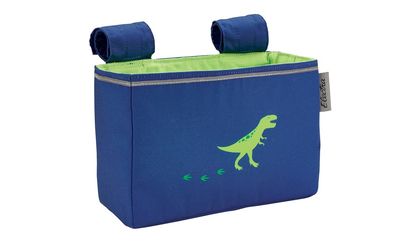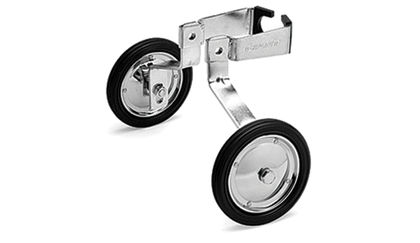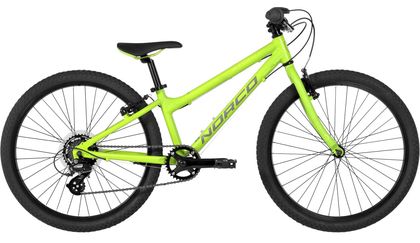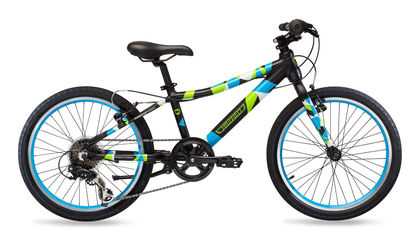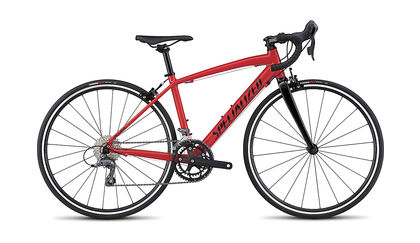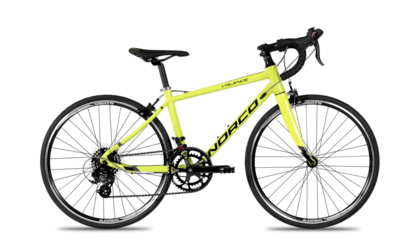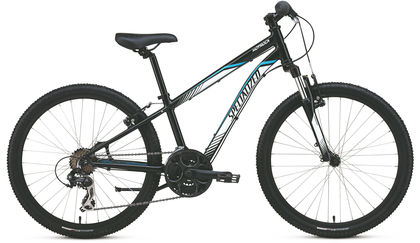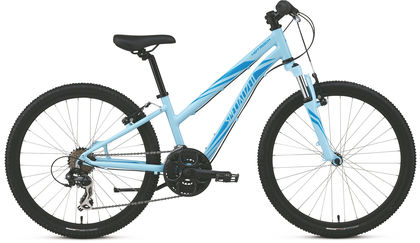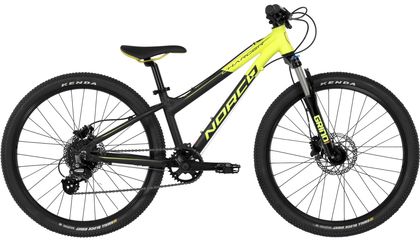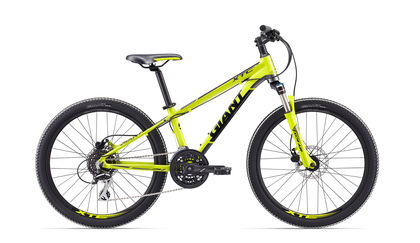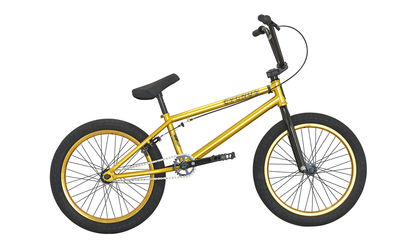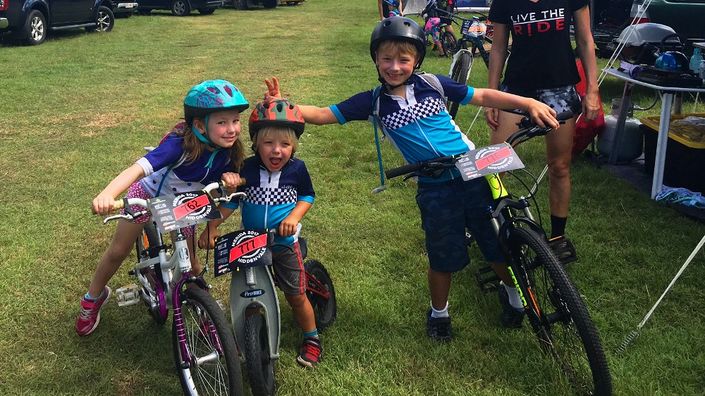
I'm not sure who was more excited about the new kids bike for Christmas, my six-year-old son or me. As parents and bike nerds, we had reviewed all the different bike brands and put them in a spreadsheet to see which ones came out on top. We decided on a new 24-inch bike as opposed to a 20-inch, which meant that he would be able to ride faster and for longer, and that he could now ride on real mountain bike tracks with us!
Obviously, every family is different and some aspects are more important than others when choosing the perfect kids bike. The choice also depends on the age of the child and the discipline or style of riding you intend on doing.
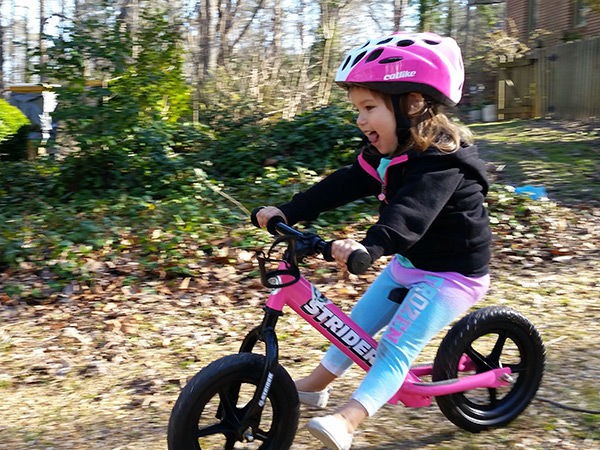
For a younger child (2-3 years), balance bikes are great. Our article, "Balance Bikes: What are they? Which ones are best for your kids?", explains all about balance bikes and which ones we love.
Once a child has mastered balance with a balance bike, it's time to choose a pedal bike.
It's far easier for an adult to choose a bike. We know what feels comfortable and how the pedals and bars should feel. For a child, they may not know what a bike 'should' feel like, as it may be their first pedal bike, making it hard to decide on the right fitting bike based on a child's feedback. Your local bike shop will be able to give some good advice on the bike fit.
To get started, first decide the main style of bike riding your child will be doing — BMX, mountain biking, road riding, or cruising — then consider these key aspects:
RELATED: BMX or geared MTB? Pros and cons
Size and standover height
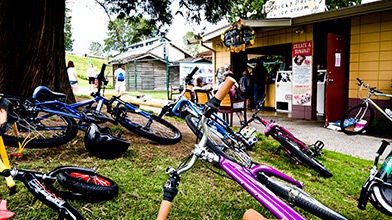
Age, height, ability, and confidence are all factors to consider when looking at the size. Generally a child moving up from a balance bike will need a bike with 16-18 inch size wheels. Don’t make the mistake of buying a bike that the kid will ‘grow into’. This is likely to backfire as the child may not feel confident on a bike that is too large. If they can’t reach the brakes or the ground, they may freak out, crash, and lose all confidence. Buying a bike that fits and gives the child confidence will mean they will have more fun riding and will want to do it more.
We contacted Strider Bikes, and they agreed completely that providing kids with a bike that fits correctly instills confidence in the rider, and that confidence is key for a child to have fun on the bike.
When comparing brands, be aware that even though the wheel sizes may be the same, different brands will have different standover heights; make sure you consider this.
RELATED: Bike Fit: Does size matter?
Weight
It's hard work riding a heavy bike. Imagine being a 60 lb child riding a bike that is 30 lb! I would be crying and saying that I wanted to go home if I had to ride a bike that was half my weight. A light bike makes a big difference. They won't want to ride if it's too hard.
DID YOU KNOW?
Cheaper bikes you find at a big box or department store are often heavier and made with inferior parts. And even if they're adequately manufactured, they may not be put together correctly.
Suspension forks
A lot of kids bikes on the market now come with suspension forks. They aren’t really necessary unless you are going to be mountain biking. If you’re planning on mostly riding on bike paths, consider skipping the suspension and save some weight and money by getting rigid forks.
Brakes
For little kids, bikes usually have a pedal/coaster brake, hand brakes, or both. The benefit of a pedal/coaster brake is smaller kids are more coordinated to use it — pedal forward to go, pedal backward to stop. Levers for hand brakes are harder to reach and trickier to master. You want your child to be able to stop, so choose according to their ability. You might go with the combination to give them the easy pedal brake as they learn hand brakes.
There are several options for hand brakes. For beginners standard v-brakes/rim brakes are great — simple to use and fairly easy to maintain. For an older child, you can get bikes with mechanical or hydraulic disc brakes, which supply more stopping power for faster speeds, but keep in mind the maintenance needs of disc brakes are generally greater than v-brakes and the cost of replacement pads is higher.
Gears or no gears
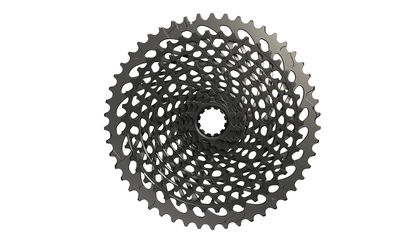
Does your child need gears? Gears make it easier to transfer pedaling energy to forward movement, like up a hill versus on a flat road, but only when used correctly. Some bikes offer plenty of them, but if a child is too young to understand the concept of gears, then using gears are more likely to confuse, frustrate, or distract them.
If you do go with gears, consider whether you want regular or internal gearing, and if the shifting will be done using lever or grip shifters.
The type of shifters is a matter of personal preference, often best decided by where you think your hands will be on the bars most as you ride. They should be reachable and confortable to use.
Some kids bikes have internal gearing, which means the gear changes are handled within the rear hub of the bike. The chain isn't moved around by derailleurs, making it much less likely to fall off from gear changes, and the enclosed systems are easier to maintain, but do come in a bit heavier.
Lastly, gear combinations. You might find the crank with a single, double, or triple chainring, and the rear wheel hub might have anywhere from 5-11 gears. Multiplying front and rear gives the total gearing options. For example, a "ten speed" bike is a double-front chainring and 5 cog rear — 2 x 5 = 10. A single front chainring is a good start because it keeps it simpler, but again, if your child understands shifting, more can be better, but having more gears on a bike doesn't necessarily make it better.
Color and accessories
Kids love to be able to choose their favorite color bike. Bright colors also provide good visibility to cars. Reflectors and bells should also come as standard safety features on all bikes. Baskets, streamers, and drink holders aren’t really necessary, but they are fun and if your child really wants them, you could always add these on later.
Training wheels
If your child has been riding a balance bike, you can probably skip the training wheels. Training wheels often impede progress of skills. The Strider Learn to Ride Guide provides tips on how you can help your child on a balance bike and this advice can also be transferred to pedal bikes.
Here are some kids bikes to get you started on your shopping spreadsheet:
Cruiser / Every day bikes
BYK Bikes E-350
The E-350 is a great first pedal bike. It comes with training wheels, but if your kid has been riding a balance bike, you probably won’t need them. It has hand brakes and a foot pedal brake, which is great when little fingers might not be able to grasp the hand brakes. It also gives added security for a beginner who is just learning to use hand brakes. It is approximately 8 kg so it’s easy for kids to ride. It also comes in seven different colors, so there is plenty of choice.
Norco Storm 4.3
The 24-inch Norco Storm 4.3 has v-brakes and rigid fork. The 4.2 model upgrades to suspension fork, and the 4.1 model upgrades to suspension fork and disc brakes. There are girl versions, too: 4.3, 4.2, 4.1. All are 7-speed, using a single chainring and no front derailleur, so there is only one shifter for kids to worry about.
Guardian 20 inch 6-speed
The Guardian 20 inch 6-speed has an easy ride geometry and comes in at only 21.5 lb. The standout feature of this bike is the inclusion of the SURESTOP brake system, which simplifies braking by having a single brake lever control braking on both wheels. SURESTOP makes it easier for kids to control the bike when braking, helps them stop faster, and prevents head-over-handlebar accidents and front wheel skidding.
Road bikes
There are mini road bikes available for kids. Targeted at the older child (not a young beginner), these bikes will mean your little roadie rider will be able to keep up with you on the bike.
Specialized Allez Jr.
With a frame that fits 650C wheels (smaller, more proportional for a smaller bike), the Allez Jr. is specifically designed for younger riders looking to up their game.
Norco Valence A 24
The Norco Valence A 24, a 24" wheel-size bike, is another road option with a lightweight frame and drop bars.
Mountain bikes
Specialized Hotrock 24 (regular or XC)
The 24” Specialized Hotrock 24 bikes (boys and girls versions in regular or slightly upgraded XC models) come with v-brakes, grip shifters, and triple front chainrings. They also have suspension forks ready to hit the trails.
Norco Charger 4.1
The Norco Charger 4.1 (24”) was the bike of choice for our six-year-old. It has a low standover height, an 8-speed rapid fire lever shifter, suspension forks, and hydraulic disc brakes.
Giant XTC SL Jr 24
The Giant XTC SL Jr 24 offers a full suite of gears (3 x 8 speed), lock out suspension forks, and hydraulic disc brakes.
BMX bikes
Mongoose Legion L20
The Mongoose Legion L20 is a 20" bike with a frame and fork are ideal for smaller riders just starting out in BMX.
Redline MX 20
The Redline MX 20 is a nice little entry level BMX. It won’t break the budget, and it weighs a reasonable 20 lbs 15 oz (9.5kg).
DK Bikes Cygnus 20
There is more choice in the DK range than you can poke a stick at. They've got 20 and 24 inch bikes in a variety of colors in most of the models. The DK Cygnus 20 stands out and turns heads in gold color with gold rims — pretty awesome.
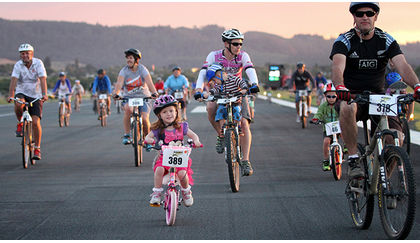
RELATED ARTICLE:
Helping your family enjoy cycling
Having a family than doesn't enjoy cycling can be tough. BikeRoar gives you some great ideas on how to help your family share your love of cycling... READ MORE
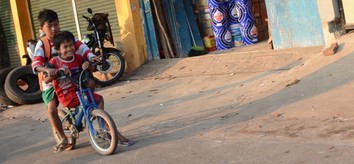
RELATED ARTICLE:
10 reasons to get your kids on a bike
Cycling encourages a healthy, involved lifestyle. Start them early and have some fun! READ MORE
